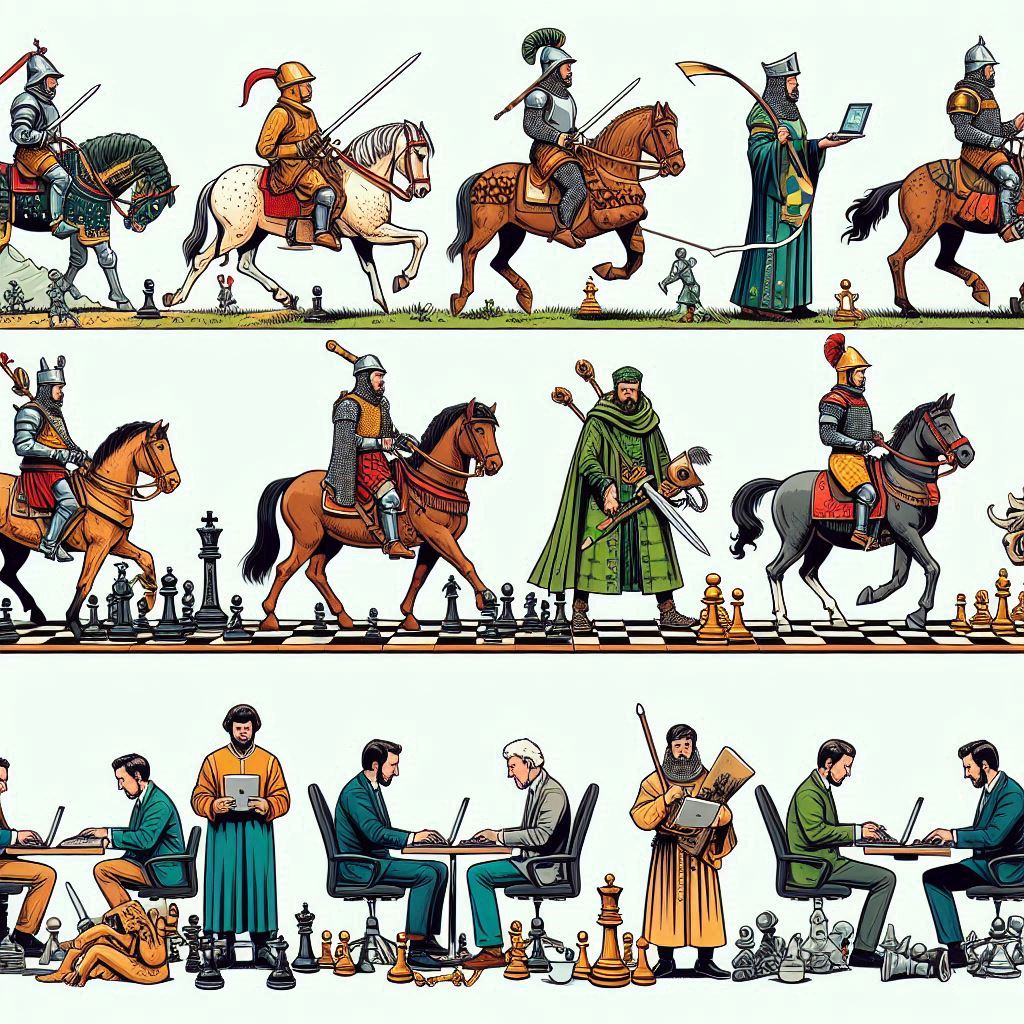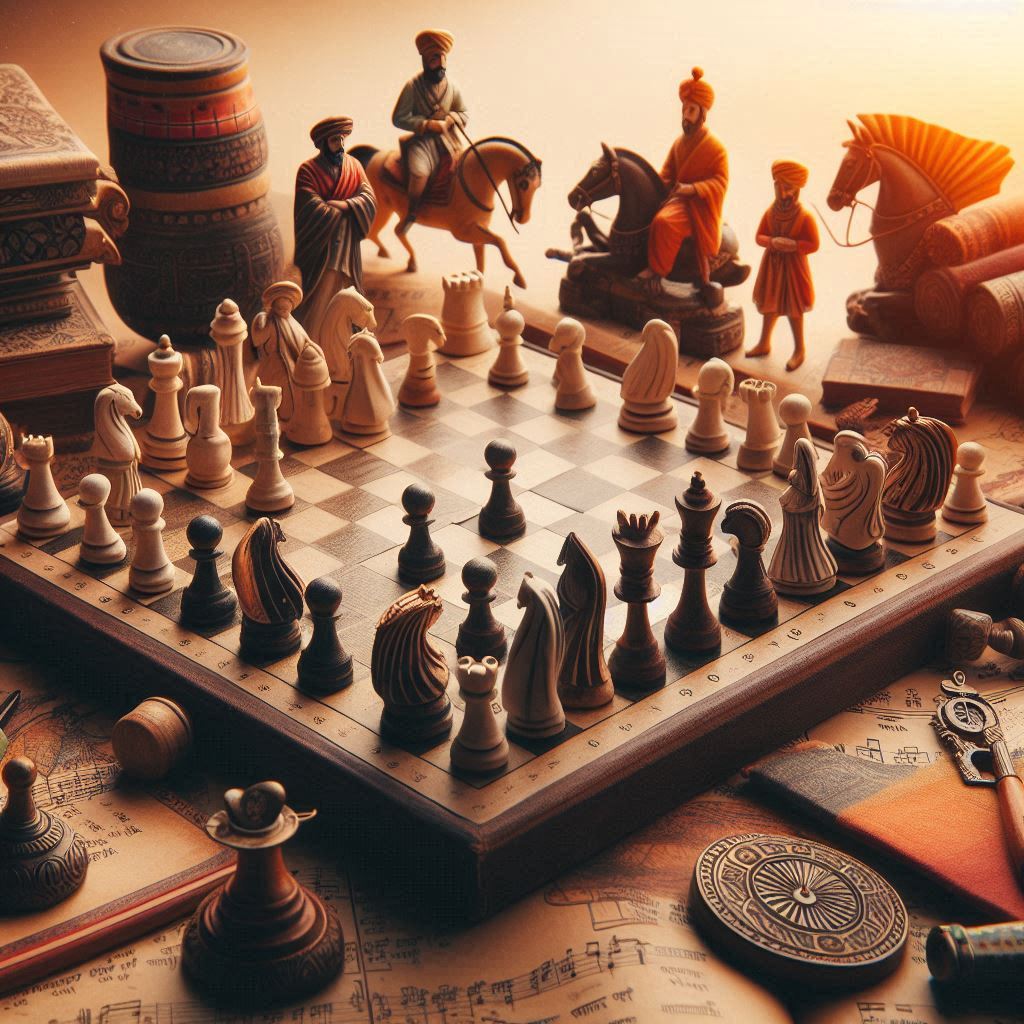Introduction
The game of chess has undergone significant transformations over the centuries. From the romantic, adventurous play of the 19th century to the precise, computer-aided strategies of today, the evolution of chess strategies reflects broader changes in how we understand and approach the game. This article explores the key phases in the development of chess strategies, highlighting the contributions of notable players and the impact of technological advancements.
The Romantic Era of Chess
Emphasis on Open Games
During the Romantic Era (19th century), chess was characterized by daring sacrifices, rapid attacks, and open games. Players prioritized direct assaults on the opponent’s king, often at the expense of material. This period celebrated bold, imaginative play and brilliant combinations.
Famous Players and Iconic Games
Iconic players of this era include Paul Morphy and Adolf Anderssen. Their games, such as Morphy’s “Opera Game” and Anderssen’s “Immortal Game,” are celebrated for their tactical brilliance and serve as quintessential examples of romantic chess.
The Classical Era
Positional Play and Development
The Classical Era, beginning in the late 19th century, marked a shift towards more systematic and positional play. Wilhelm Steinitz, the first official World Chess Champion, pioneered the principles of positional chess, emphasizing the importance of pawn structure, piece activity, and king safety.
Contributions of Wilhelm Steinitz
Steinitz introduced the concept of the accumulation of small advantages and the importance of maintaining a strong center. His ideas laid the foundation for modern positional play and influenced subsequent generations of players.
The Hypermodern Movement
Control of the Center from a Distance
In the early 20th century, the Hypermodern Movement challenged classical principles. Hypermodernists like Aron Nimzowitsch and Richard Réti advocated for controlling the center with pieces rather than pawns, allowing for greater flexibility and counterattacking opportunities.
Key Proponents and Their Contributions
Nimzowitsch’s book “My System” and Réti’s contributions to opening theory, such as the Réti Opening, introduced new strategic concepts that are still relevant today. They emphasized prophylaxis, overprotection, and the dynamic potential of seemingly modest pawn structures.
Post-War Strategies
Influence of Soviet School of Chess
The post-World War II period saw the dominance of the Soviet School of Chess. Soviet players, including Mikhail Botvinnik, Anatoly Karpov, and Garry Kasparov, combined rigorous training methods with deep opening preparation and a strong emphasis on endgame technique.
Rise of Systematic Opening Preparation
This era highlighted the importance of thorough opening preparation. Players began to explore and prepare deep theoretical lines, seeking to gain an early advantage through superior preparation.
The Computer Age
Impact of Computers on Chess
The advent of computers revolutionized chess. Chess engines like Stockfish and AlphaZero have provided unprecedented analytical power, uncovering new depths of understanding in both opening theory and complex middle game positions.
Contributions of AI and Chess Engines
Artificial Intelligence (AI) has challenged and expanded human understanding of chess. AlphaZero’s self-taught approach demonstrated the power of AI to innovate and find creative solutions, influencing modern playing styles and preparation techniques.
Modern Chess Strategies
Integration of Classical and Hypermodern Ideas
Modern chess strategies integrate classical principles with hypermodern ideas, creating a more versatile and dynamic approach. Players must be adept at both solid positional play and sharp tactical skirmishes.
Contemporary Opening Trends
Today’s top players employ a wide range of openings, blending classical lines with hypermodern systems. Flexibility and adaptability are key, as players often prepare multiple opening repertoires to remain unpredictable.
Influence of World Champions
Contributions of Notable World Champions
Each World Champion has left a unique mark on chess strategy. Bobby Fischer’s dedication to opening preparation, Karpov’s mastery of positional play, and Kasparov’s dynamic style have all contributed to the evolution of chess.
Evolution of Championship Strategies
Championship strategies have evolved to include comprehensive preparation, psychological readiness, and the ability to adapt to different playing styles. Modern champions like Magnus Carlsen exemplify versatility and resilience.
The Role of Tactics and Calculation
Importance of Tactical Awareness
Tactics remain a cornerstone of chess strategy. Players must constantly sharpen their tactical vision through practice and study, as a single tactical oversight can decide the outcome of a game.
Deep Calculation Techniques
Advanced calculation techniques involve visualizing multiple moves ahead, considering various responses, and accurately assessing the resulting positions. Regular practice with complex puzzles enhances these skills.
Endgame Theory Evolution
Key Endgame Principles Over Time
Endgame theory has evolved significantly, with contributions from players like Capablanca, Karpov, and Karsten Müller. Fundamental principles such as the importance of king activity and the power of passed pawns have been deeply explored.
Contributions to Modern Endgame Understanding
Modern endgame understanding has been enhanced by computer analysis, providing precise evaluations and optimal strategies for complex positions. Books and databases by endgame experts offer invaluable resources for serious players.
Psychological Elements
Mind Games and Psychological Strategies
Psychological strategies play a crucial role in competitive chess. Understanding an opponent’s temperament, exploiting their weaknesses, and maintaining mental toughness are vital components of a successful chess strategy.
Famous Psychological Battles in Chess History
Historic matches, such as Fischer vs. Spassky in 1972 and Karpov vs. Kasparov in the 1980s, showcased intense psychological battles. These encounters highlighted the importance of mental resilience and strategic mind games.
Chess in the Digital Age
Online Platforms and Their Influence
The rise of online chess platforms like Chess.com and Lichess has democratized access to chess, allowing players of all levels to compete, learn, and improve. These platforms offer a wealth of resources, including tutorials, puzzles, and game analysis.
Rise of Rapid and Blitz Formats
Rapid and blitz formats have gained popularity, emphasizing the importance of quick thinking and time management. These formats require a blend of intuition, speed, and accuracy, adding a new dimension to competitive chess.
Learning from Historical Games
Analyzing Classic Matches
Studying historical games provides insight into the evolution of chess strategy. Analyzing classic matches helps players understand the strategic ideas and tactical motifs that have shaped the game over time.
Lessons from Historical Games
Historical games offer valuable lessons in both strategy and psychology. They demonstrate the timeless principles of chess while highlighting the creative ingenuity of past masters.
Training Methods Over the Years
Traditional vs. Modern Training Techniques
Traditional training methods, such as studying classic games and practicing with a coach, remain important. However, modern techniques incorporating chess engines, online resources, and comprehensive databases have revolutionized training.
Impact of Technology on Training
Technology has significantly impacted chess training, providing tools for detailed analysis, personalized training programs, and access to a global community of players and coaches. This integration of technology enhances learning and accelerates improvement.
FAQs
What is Hypermodernism in chess?
Hypermodernism is a chess strategy that emphasizes controlling the center with distant pieces rather than occupying it with pawns, challenging traditional principles.
How has computer analysis influenced chess strategies?
Computer analysis has deepened our understanding of optimal moves, revealing insights that have revolutionized opening theory, middle game tactics, and endgame techniques.
Who are some influential figures in the evolution of chess strategies?
Influential figures include Paul Morphy, Wilhelm Steinitz, Garry Kasparov, and Magnus Carlsen, each contributing significantly to the development of chess strategies.
What is the Soviet School of Chess?
The Soviet School of Chess refers to the systematic training and rigorous study methods developed in the Soviet Union, which produced many world-class players.
How has online chess impacted strategy development?
Online chess has made the game accessible to a global audience, allowing players to compete, learn, and share strategies more easily, accelerating the evolution of chess knowledge.
What are the future trends in chess strategies?
Future trends likely include further integration of AI insights, exploration of new ideas, and continuous refinement of existing strategies as technology and human creativity advance.
Conclusion
The evolution of chess strategies over time reflects the game’s richness and complexity. From ancient tactics to modern innovations influenced by technology, chess has continually adapted and grown. Understanding this evolution enhances our appreciation of the game and provides valuable insights for players seeking to improve their skills. As we look to the future, the fusion of human creativity and technological advancements promises to keep chess a dynamic and ever-evolving intellectual pursuit.



